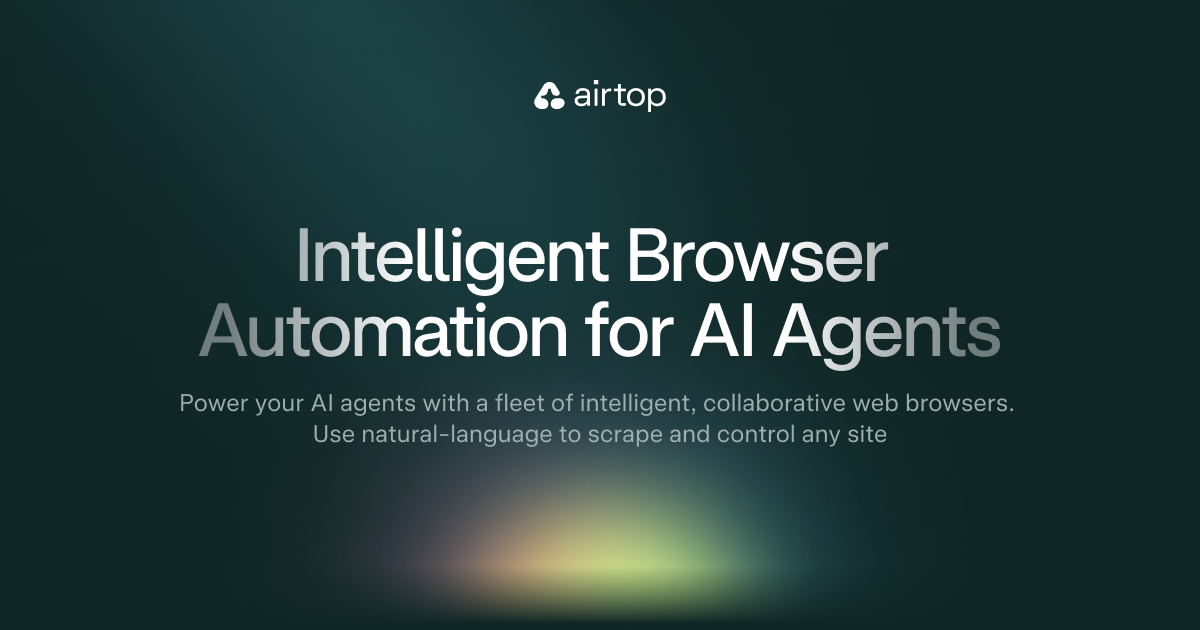- AI Breakfast
- Posts
- Programming Robots With Prompting
Programming Robots With Prompting
Good morning. It’s Friday, February 7th.
Did you know: On this day in 1984, astronauts Bruce McCandless II and Robert L. Stewart conducted the first untethered spacewalk using the Manned Maneuvering Unit (MMU)
In today’s email:
Programming Robotics With Natural Language
Google’s Gemini 2.0 Pro
ChatGPT Displays Chain-of-Thought
4 New AI Tools
Latest AI Research Papers
You read. We listen. Let us know what you think by replying to this email.
This isn’t traditional business news
Welcome to Morning Brew—the free newsletter designed to keep you in the know on the business news impacting your career, company, and life—in a way you didn’t know you needed.
Note: this isn’t traditional business news. Morning Brew’s approach cuts through the noise and bore of classic business media, opting for short writeups, witty jokes, and above all—presenting the facts.
Save time, actually enjoy business news, and join over 4 million professionals reading daily.

Today’s trending AI news stories
HuggingFace Pi0 Makes Robotics Fluent in Human Language
Hugging Face and Physical Intelligence just dropped Pi0, an open-source robotics model that cuts out the coding middleman. Robots can now execute complex tasks—folding laundry, bussing tables, packing groceries—straight from natural language commands. Trained across seven robotic platforms and 68 task domains, Pi0 wields flow matching to generate real-time action trajectories at 50Hz, making movements seamless and adaptable.
Very happy to announce that we are open-sourcing the π₀ model, weights, and some fine-tuned checkpoints! Hoping this leads to lots of great follow-up research: github.com/Physical-Intel…
Here is a fun test from our friends at UPenn.— Sergey Levine (@svlevine)
5:01 PM • Feb 4, 2025
A faster variant, Pi0-FAST, incorporates frequency-space action sequence tokenization (FAST), accelerating training speeds fivefold. The model's open-source release lowers barriers to robotic automation, allowing enterprises to fine-tune policies for diverse applications. While promising, Pi0 faces hurdles in computational efficiency and execution reliability. Available on HuggingFace. Read more.
Google launches Gemini 2.0 Pro, Flash-Lite and connects reasoning model Flash Thinking to YouTube, Maps and Search
Google has dropped Gemini 2.0 Flash into general availability, pushed the ultra-cost-efficient Flash-Lite into public preview, and rolled out an experimental Gemini 2.0 Pro. Designed for enterprise-scale efficiency, these models supercharge multimodal processing across Google AI Studio and Vertex AI. Flash-Lite, the leanest model yet, outperforms Gemini 1.5 Flash on MMLU Pro (77.6% vs. 67.3%) and Bird SQL (57.4% vs. 45.6%) while holding firm on a 1-million-token context window—four times the industry standard. Gemini 2.0 Flash goes head-to-head with OpenAI’s o3-mini, maximizing efficiency without slashing capability.
Google has also embedded its Gemini 2.0 Flash Thinking model into Maps, YouTube, and Search, injecting AI-driven reasoning straight into its ecosystem. Meanwhile, Gemini 2.0 Pro—armed with a 2-million-token context window—levels up tool use, reasoning, and code execution. Read more.
OpenAI teases deeper transparency while expanding ChatGPT’s memory
OpenAI has updated the Chain-of-Thought (CoT) reasoning in its O3-Mini models, making it more transparent for both free and paid users. The refinement extends to O3-Mini-High for paid users. However, OpenAI has clarified that these are not the raw CoT outputs, suggesting that while the update offers greater visibility, it stops short of full disclosure.

Chain-of-Thought displayed on o3-mini’s response
Separately, OpenAI has expanded ChatGPT’s memory limit by 25% for Plus, Pro, and Team users, with plans to roll out the increase to Enterprise and Edu accounts soon. Read more.

Boston Dynamics joins forces with its former CEO to speed the learning of its Atlas humanoid robot
Not every AI prompt deserves multiple seconds of thinking: how Meta is teaching models to prioritize
Amazon to revamp Alexa’s AI core with Titan and Claude, ready for February launch
Oxford Teleports Logical Gates, Cracking Quantum Scalability
THAAD 6.0: US plans hypersonic-killing, AI-driven, laser-armed missile defense system
DeepSeek: The countries and agencies that have banned the AI company's tech
Drop yourself into any scene with Pikadditions—no green screen required
OpenAI expands search for AI data center sites across 16 states
OpenAI co founder John Schulman is joining Mira Murati’s startup after brief stint at Anthropic
Google have done it, Gold-medalist Performance in Solving Olympiad Geometry with AlphaGeometry2
Topaz Labs Unveils Project Starlight, First AI Model for Video Restoration
Copilot expands with self-iterating AI and automated debugging
World's first quantum large language model launched, can shape future of AI
Musk Called Drones, AI the Future of War in West Point Interview
Meta launches new program to improve speech and translation AI

4 new AI-powered tools from around the web

arXiv is a free online library where researchers share pre-publication papers.


Thank you for reading today’s edition.

Your feedback is valuable. Respond to this email and tell us how you think we could add more value to this newsletter.
Interested in reaching smart readers like you? To become an AI Breakfast sponsor, reply to this email or DM us on 𝕏!






